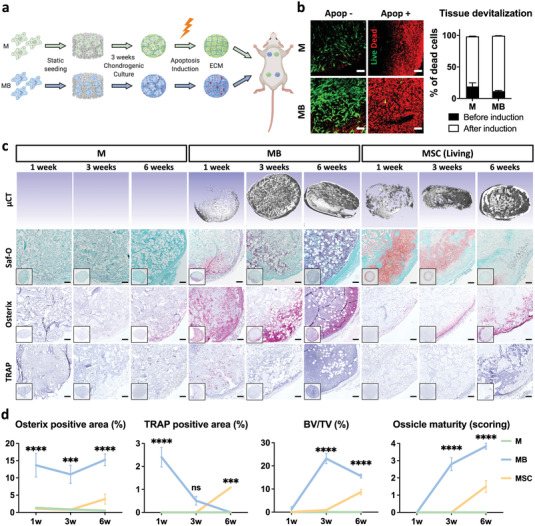Figure 2.

Engineered MSOD‐B cartilage is highly osteoinductive following apoptosis‐driven devitalization. a) Tissues were engineered by chondrogenic culture of MSOD (M) or MSOD‐B (MB) cells on collagen sponges, followed by devitalization through apoptosis induction. The osteoinductivity of the resulting extracellular matrices (ECM) was assessed by subcutaneous implantation in mice. b) Activation of apoptosis led to efficient tissue devitalization as assessed by live (calcein, green)/dead (ethidium bromide, red) staining and flow cytometry Annexin V/PI quantification (n = 3). c) Devitalized MB tissues underwent a fast and efficient remodeling into fully mature bone organs (microtomography, µCT), through massive osteoblastic (Osterix) and osteoclastic (tartrate resistant acid phosphatase (TRAP)) cell recruitment. The activated endogenous endochondral process bypassed in speed and final tissue maturity the performance of living cartilage generated from selected chondrogenic batches of primary hBM‐MSCs (here MSC). In strong contrast, devitalized M tissues did not form any bone. Scale bars = 100 µm. d) Histological quantifications as well as microtomography analysis (bone volume, BV, in percentage of total volume, TV) confirmed the superior and faster bone formation of devitalized MB cartilage tissues, associated with a higher host cell recruitment. Methodology for ossicle maturity score is described in Figure S6, Supporting Information (n ≥ 5). The graphs represent mean ± SD, ***p ≤ 0.001, ****p ≤ 0.0001 determined by two‐way ANOVA between MB and MSC.
